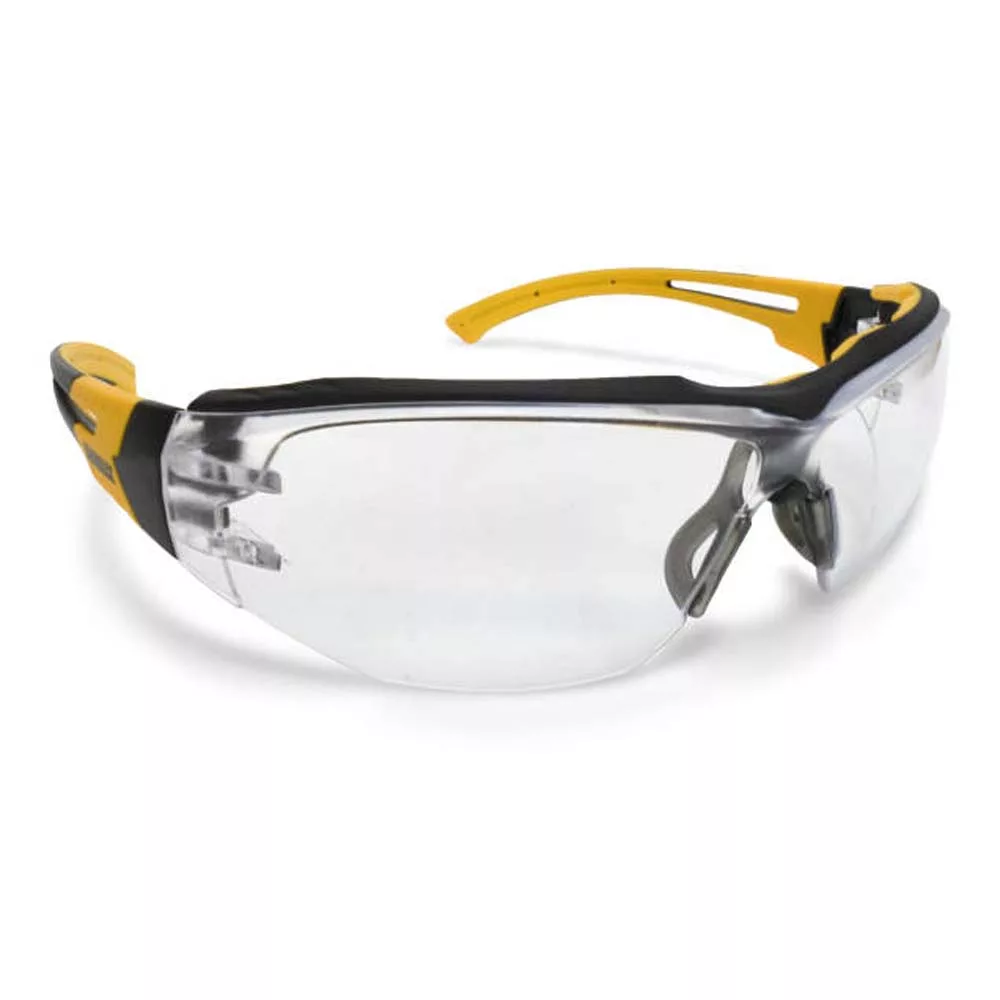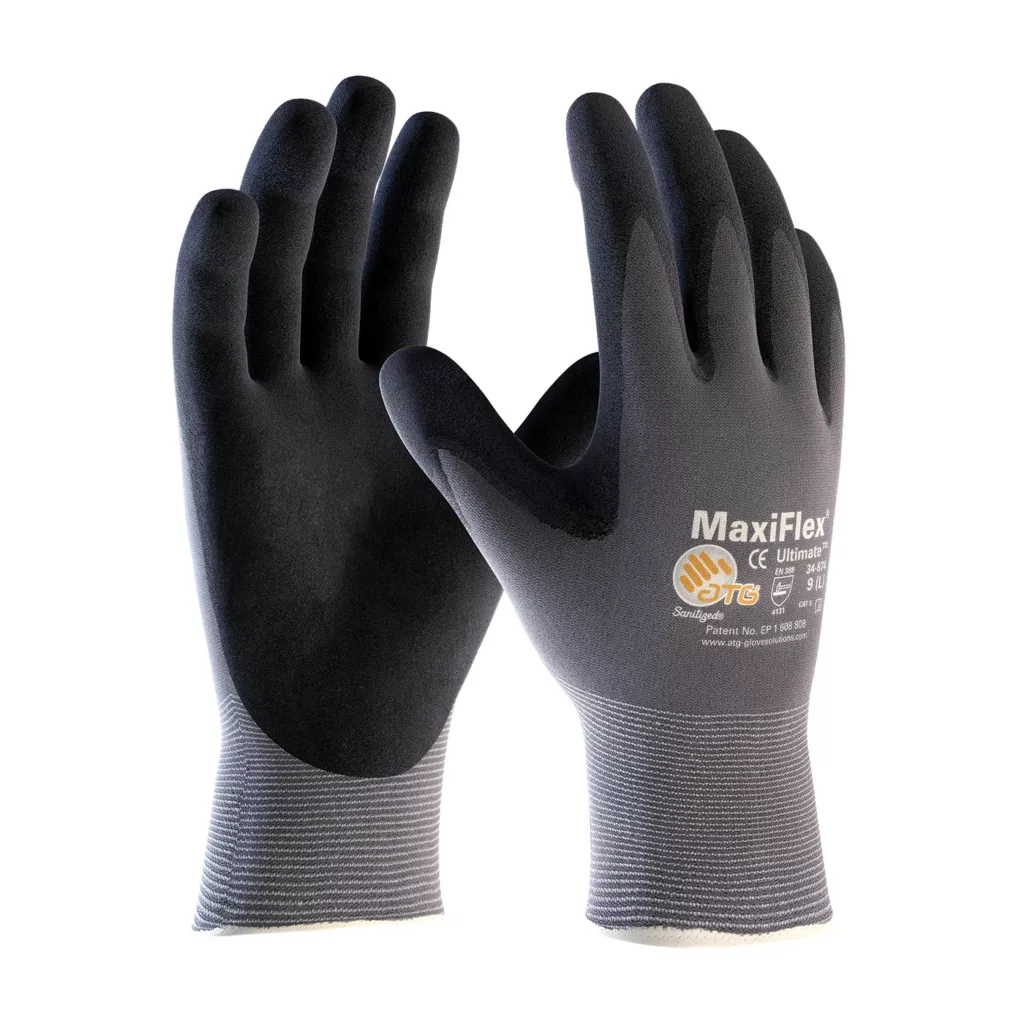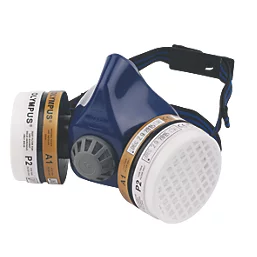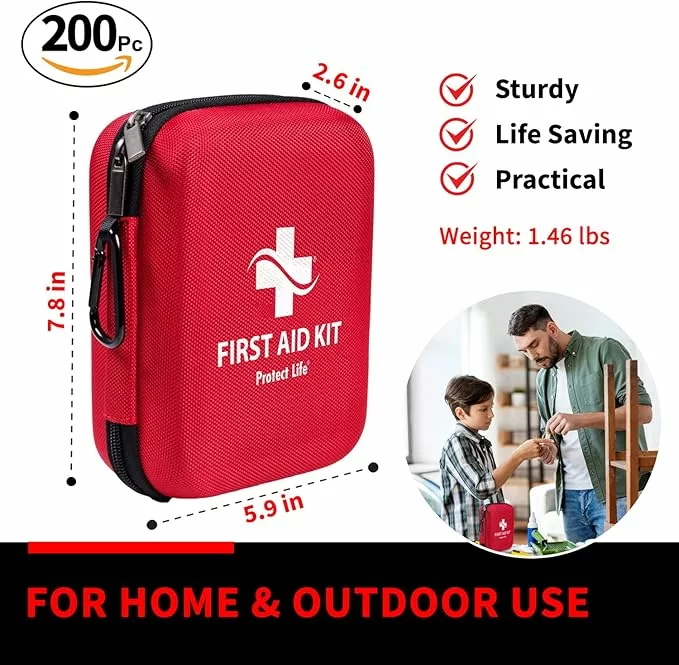Safety in all crafts a workshop, or on-site, isn’t just a checkbox to tick off; it’s the backbone of a creative environment where ideas flourish without jeopardizing health or well-being. Whether in a bustling professional workshop or factory, or a cozy home studio, maintaining a diligent focus on safety is a must.
Craftsmanship and safety might seem like strange bedfellows at first, but they truly go hand in hand. It’s a relationship that allows craftsmanship to thrive. A safe workspace encourages the focus and innovation needed to push creative boundaries without fear of mishaps.

As an Amazon Associate, I earn from qualifying purchases.
This post contains affiliate links. If you make a purchase through these links, I may earn a commission at no extra cost to you.

Looking back over the decades, the evolution of workplace safety, especially in creative fields, is significant. Industries like construction learned the hard way about the essential nature of safety regulations. Today, organizations like OSHA and HSE have set high safety standards, leading to safer environments where accidents and injuries are no longer as rampant.
Unfortunately, crafting in home studios or small workshops sometimes comes with the misconception that safety isn’t as crucial. But the hazards, whether they come from toxic resins or sharp tools, remain potent regardless of scale. Embracing safety protocols not only protects you and those around you but also enhances your ability to create freely.
The foundation of safety in crafts lies in a combination of awareness, preparation, and respect for the materials and tools at hand. It requires a conscious effort to integrate safety into every aspect of your creative process, transforming it from a background consideration into a central pillar of your craft.
Craft-Specific Safety Considerations
Every craft brings its own unique set of challenges and potential hazards, making it crucial to identify these risks from the outset. The materials you choose and the tools you use dictate the safety measures you’ll need to implement in your workspace. For those delving into mold-making, resin crafting, or complex sculptural work, understanding the specific risks is an essential first step.
Let’s break it down bit by bit. With mold-making, you’re often dealing with chemicals that can react unpredictably. This can mean unexpected fumes or messes if you’re not prepared. Always have proper ventilation and be cautious about skin contact with uncured resins or silicone to avoid potential allergic reactions.
In resin crafting, the fumes from curing resins are a significant risk. An area with poor ventilation can turn harmful quickly. Ensuring adequate airflow and using a respirator designed to filter out those nasty fumes can go a long way in protecting your health.
Each tool also carries its own risks. From soldering irons to hobby knives, every piece of equipment demands respect and knowledge. Understand their functions and limitations to prevent accidents, and always use the recommended protective gear. Cut-resistant gloves, eye protection, or heat-resistant aprons might feel cumbersome at first but are invaluable.
Tailoring your safety strategies to fit your unique craft environment isn’t just a precaution; it’s a craft form in itself. By considering these specific safety aspects, we create spaces that don’t hinder our creativity but instead provide the freedom to push those boundaries further.



Essential Protective Gear for Crafters
Gear up right; that’s the mantra when it comes to craft safety. Protective equipment isn’t just for show, it’s your frontline defence against a host of potential injuries and health risks in the creative process.
Start with eye protection. Using safety glasses or goggles can be a lifesaver when you’re handling materials that splash, chip, or generate dust. Projects involving plaster mixing or grinding small parts can send particles flying. Preventing eye injuries is worth the few extra seconds it takes to put on a pair of goggles every time.
Breathing is something we often take for granted until we’re hit with the smell of epoxy resin or the fine dust from sanding. These aren’t just annoying—they can be harmful. Respiratory protection like masks or respirators designed for filtration of fine particles is crucial to maintaining your lung health while working.
Let’s not overlook gloves—they do double duty. Depending on the task, you may need different types. Chemical-resistant gloves are ideal when handling potentially irritating substances like solvents or epoxies, while cut-resistant gloves offer protection when you’re sculpting or using craft knives. Choose the right one for the job to keep those hands safe.
And then there’s hearing protection. It might surprise you, but crafting can be quite noisy. Tools like sanders and grinders can hit decibel levels high enough to cause hearing damage. Earplugs or earmuffs can protect your hearing for years down the road.
Making sure you have the right protective gear is an investment in yourself and your craft. It’s about maintaining your health while allowing your creativity to flourish without reservation. Always consider what you’re working with and dress the part to ensure both safety and uninterrupted creative flow.
Workstation Setup: Designing a Safe Craft Haven
The heart of crafting lies in a well-organized and safe workspace. A thoughtful setup minimizes risks and boosts your efficiency, letting you focus on bringing your creative visions to life without any hindrance.
Ventilation is key, especially when your projects involve materials like resin, foam, or anything that releases fumes. Proper airflow in your craft area helps dissipate hazardous particles, keeping the air fresh and your lungs happy.
Lighting also plays a significant role. A well-lit workstation prevents errors by reducing eye strain and helping you spot any potential safety hazards on your workbench. Natural light is ideal, but if that’s not possible, consider bright, cool-toned lights that mimic daylight.
Then there’s the layout. A clutter-free space ensures everything you need is within reach without creating trip hazards. Secure everything that could topple or roll off your workspace, like tools and jars. Non-slip mats can prevent dangerous falls, adding an extra layer of safety for you to move confidently.
Think about ergonomics too. Having a comfortable chair, the right height of work tables, and tools positioned according to your workflow reduces physical strain. This might seem minor, but it prevents long-term injuries, especially if you spend hours doing repetitive tasks.
Creating a workspace that works for you, not against you, isn’t just about aesthetics. It’s a strategic move to make your crafting experience safer and more enjoyable. Take the time to review your setup regularly. Adjustments, even small ones, can lead to significant safety and productivity improvements.
Beyond the Basics: Advanced Craft Safety Strategies
Once you’ve got the hang of the basic safety practices, it’s time to level up with advanced strategies that tackle the less obvious risks. Advanced projects often come with complex challenges that aren’t always covered by general safety tips.
Consider projects like mold-making and casting. These require not just basic safety gear but also keen awareness of chemical reactions and mold stability. Ensuring molds are properly secured can prevent spills, and understanding the curing process helps manage both safety and project quality.
For those working with heat, such as wax or glass crafts, having heat-resistant gloves and protective aprons is a must. These items are critical in preventing burns. Double-check that your work area can safely handle the high temperatures involved, possibly adding additional heat-resistant surfaces or protective barriers.
Unique materials like nano silica used in resin projects for special effects carry specific risks, mainly inhalation hazards. It’s essential to adjust your protective gear accordingly, often requiring more specialized respirators capable of filtering out very fine particles.
Develop a habit of reviewing the safety data sheets (SDS) for every new material you introduce to your projects. This ensures you’re aware of any additional precautions you might need to adopt for handling, storage, or disposal.
Advanced safety measures are not about complicating your workflow but rather about ensuring you have the freedom to explore complex ideas securely. By understanding your materials and the potential risks involved, you create an environment ripe for innovation and experimentation without compromise.
Integrating Safety into Daily Crafting Routines
Building a safe crafting practice is about more than just having the right gear or a well-organized space; it’s about embedding safety into every step of your creative routine. This mindset shift ensures you’re perpetually aware of potential hazards, even as your projects evolve.
Training can make a world of difference. Take the time to really understand your tools and materials inside and out. Workshops or online courses can provide valuable insights, helping you to operate safely and efficiently.
Emergency preparedness is something you hopefully never need, but it’s crucial to be ready just in case. Keep a fire extinguisher and first aid kit within easy reach, and make sure you know how to use them. An evacuation plan might seem excessive, but knowing your exit options can be a lifesaver.
Organization is another cornerstone of a safe crafting routine. Labeling materials accurately prevents mix-ups, especially with chemicals that could react dangerously. Securely store everything, especially harmful substances, away from kids and pets.
Routine maintenance checks on tools and equipment ensure everything’s in good working order. Sharp blades, for example, are far safer than dull ones which can skip and cause injuries. Regularly checking and maintaining equipment also helps prevent unexpected failures.
This proactive approach to safety weaves protection seamlessly into your workflow, enhancing not only your safer crafting experience but fostering a space where creativity can truly flourish without undue worry.
Resources and Key Takeaways for Craft Enthusiasts
Stepping back to see the bigger picture, it’s clear that fostering a safe crafting environment lies at the intersection of knowledge, preparation, and continuous improvement. Safety is not static; it evolves as you do, adapting to new techniques and materials.
Several resources can help guide you on this journey. Organizations like OSHA in the United States and HSE in the UK offer comprehensive guidelines tailored to various industries, including crafts. Their resources are invaluable for understanding both general safety practices and industry-specific standards.
The National Safety Council and other safety-focused organizations provide online articles, training courses, and support networks aimed at enhancing safety awareness. These tools are great for staying informed about best practices and innovative safety solutions in the craft world.
Conclusion
Remember, safety is the foundation upon which creativity builds. It empowers you to explore, experiment, and express your ideas freely without fear of injury or mishap. Investing in safety measures protects your well-being and enhances your confidence and productivity in crafts.
As you continue your crafting journey, let safety be your constant companion, guiding you through new creative challenges and ensuring that your space remains a haven of innovation and joy.
Ultimate PPE & Safety Equipment list
- Safety glasses and goggles
- Earplugs and/or earmuffs
- Masks and respirators
- Gloves (chemical-resistant, cut-resistant, etc.)
- Safety helmets
- Protective footwear (anti-slip, steel-toed)
- Protective aprons or Lab coats
- Fire extinguishers
- First aid kits
- Warning signs and barriers
- Safety ladders and scaffolding
At the very least please make sure you use the right “mask for the task”, gloves and eye protection, and have a clean work area.
Contact Us
We hope you find the information useful, but if you have any questions or need help, send us a message. You do have to sign in and confirm these days to comply with government rules. Sorry for the inconvenience.
Author Rob



This article offers an excellent deep dive into the importance of safety in crafting, emphasizing its role as the backbone of creativity and innovation. It’s refreshing to see such a comprehensive approach to safety, covering everything from basic precautions to advanced strategies tailored to specific crafts like resin work, mold-making, and heat-based projects.
The detailed breakdown of protective gear, workstation setup, and the integration of safety into daily routines is particularly valuable for both beginners and experienced crafters. The focus on proactive measures, such as maintaining tools and understanding material safety data sheets (SDS), highlights the need for continuous learning and adaptation.
I also appreciate the call to view safety as an enabler rather than a hindrance to creativity. By fostering a secure and organized workspace, crafters can truly focus on pushing their creative boundaries without fear of mishaps.
Overall, this article is a must-read for anyone in the crafting world, offering practical advice and resources to help ensure that creativity flourishes in a safe and mindful environment. Great work!
Hi John,
And thank you for your great and detailed comments, safety is so critical and often overlooked.
I hope you delve into crafts in the future.
Rob
Hello Robby!
This article on safety in crafts is so important! I love how it covers everything from choosing the right tools to understanding potential hazards in different materials. It really makes you think about how often we overlook safety, even in creative hobbies.
Have you ever had an accident while crafting? I’ve definitely had a few close calls, and I’m curious how others make safety a top priority in their projects. I also have a big phobia of specifically cutting the skin between my fingers whenever I am using scizzors.
What’s one safety tip you’d give to someone just starting out in a new craft?
Angela M 🙂
Hi Angela,
I am glad you found the post interesting, we all need to take safety seriously. Which I probably wasn’t when I was making some furniture pieces many years ago.
I was using a heavy-duty frame stapler, rushing with my work and shot 3 fingers together with the long staples. And yes it hurt.
Robby